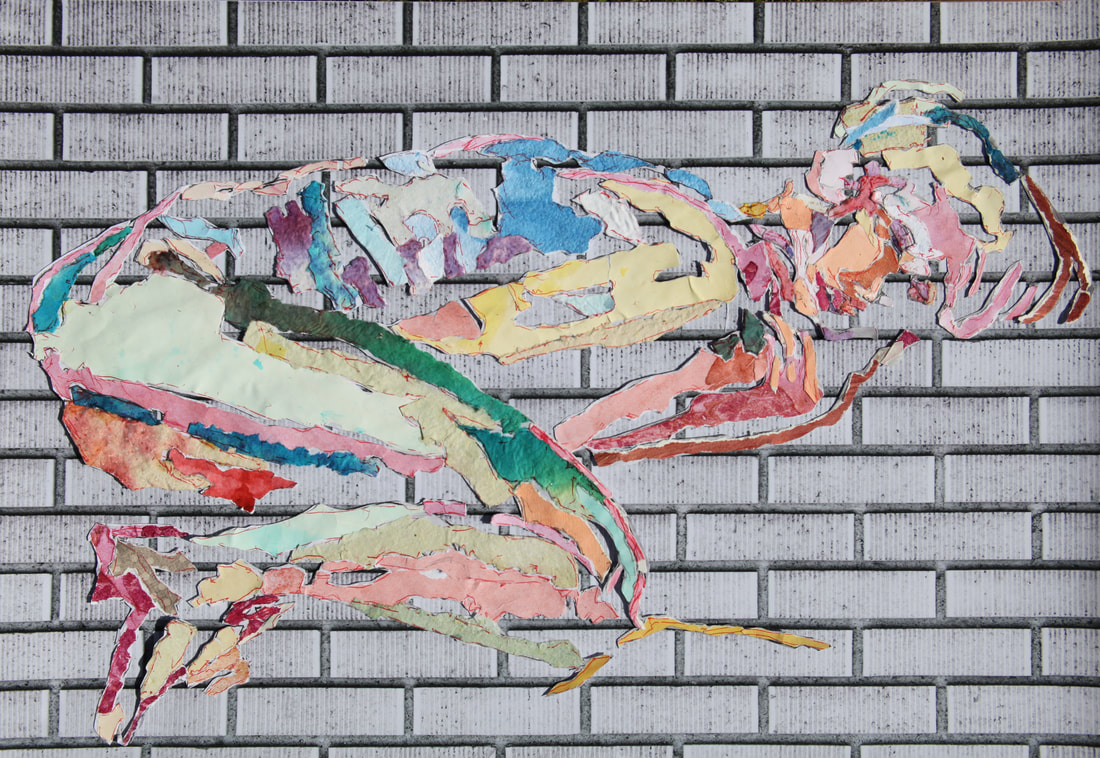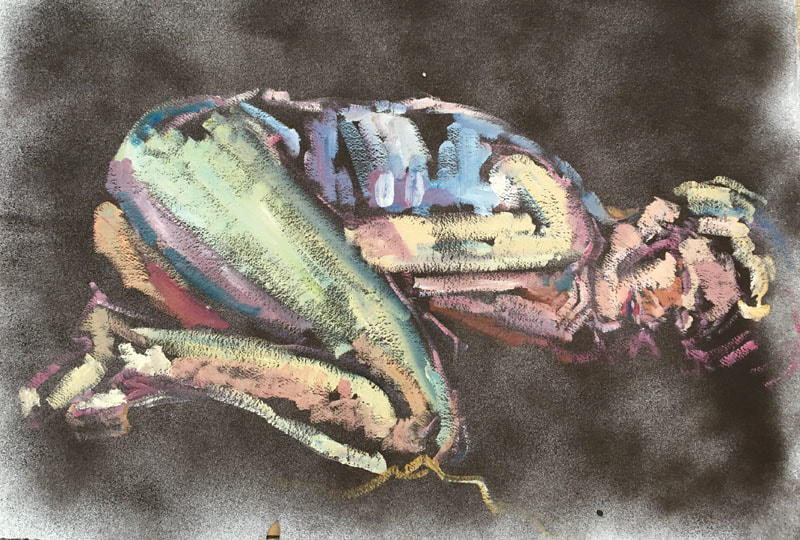|
My new collection is ready...  I have spent the last few years creating work based on the book ‘The Hour of the Star’ by Brazilian writer, Clarice Lispector. This is a haunting and poetic novel written from the point of view of a male narrator who is grappling with how to paint a picture, through his writing, of an intriguing antihero: Macabea, a girl, who lives and works in Rio de Janeiro. I carried out the preparatory sketches for the work in oil, working from a live model. In the final artworks, the ‘energetic’ paint strokes have been replaced with torn pieces of paper, laid down as a more restful interpretation, reflecting the qualities of the quiet unassuming character in the book. The figures are displayed on anonymous walls, that belong to the street, to everyone. Like fragments of posters with yesterday's news, they are clues to a story that cannot be easily told. The paper used is a mixture of recycled paper and paper made by hand (out of recycled papers). By making use of something that might have otherwise been discarded, I am trying to emulate the aims of the book’s male narrator, who wished to reveal the beautiful aspects of the sparse material he chose to work with. Over the years, I have been influenced by Joan Miro, Dinah Prentice, Coptic textiles, shadow puppetry, Paula Rego, Pablo Picasso, Vincent Van Gogh, William Turner and Henri Matisse. This work will be on display at Mrs F's Fine Food Emporium in Keswick until 5 September 2018. Notes on Clarice Lispector (by Adam Joseph Shellhorse, Centre for Latin American Studies, University of California ) ‘Clarice Lispector’s final and highly acclaimed literary work A hora da estrela (1977)—composed while the author was battling cancer and which would cause her untimely death in December of 1977— is an avant-garde novel that powerfully examines the impasse of representing the subaltern from the sphere of experimental literature. By the subaltern, I refer with Clarice’s example in protagonist and migrant Macabéa, to social subjects that stand epistemologically and politically outside, on the margins, and in the cracks of state, institutional and literary representation. In exploring this social and political dilemma and the problem of writing proper, the novel forges a fragmentary narrative perspective that interpellates the reader to reflect on the fissures and limits of literary culture and its modes of knowledge. Accordingly, if the novel begins by recounting the confession and literary credo of alienated writer-narrator, Rodrigo S.M., who yearns to bridge the gulf between writers and subalterns through the very novel and story that the reader is reading—it also foregrounds the modes by which Rodrigo weaves together the fragmentary story of Macabéa, a subaltern migrant who has journeyed from an impoverished region in the Brazilian Northeast to Rio de Janeiro in hopes of acquiring a better livelihood and work. Far from paternalistic or a “speaking for” the subaltern through literature, it could be said that Rodrigo’s narrative becomes more a theoretical space for his own self-conscious reflections on the nature of writing, ethics, and politics which posit and challenge the reader to consider the subaltern Macabéa as a limit and impasse to his writing and thinking procedures.’
0 Comments
Leave a Reply. |
Celia BurbushPursuing an understanding of what we need to exist in the world: how do we connect with others (and the wider world and its objects), what is our language. Archives
April 2023
Categories |
- Home
-
WORKS
- Maryport in Painting, 2023
- Co-research with Kirkgate communities, 2022
- story of we 2022
- Journey Portraits, 2022
- Light trails 2021
- In Open Spaces 2021
- Make it Now
- Lockdown portraits 2020
- How a Painting Speaks, 2018
- These Four Walls 2017
- Home is where the heart is 2017
- Dreaming of home 2016
- Life of a House, 2017
- Dialogue with E numbers, 2014
- Hour of the Star
- Film Archive
- News
- ABOUT


 RSS Feed
RSS Feed